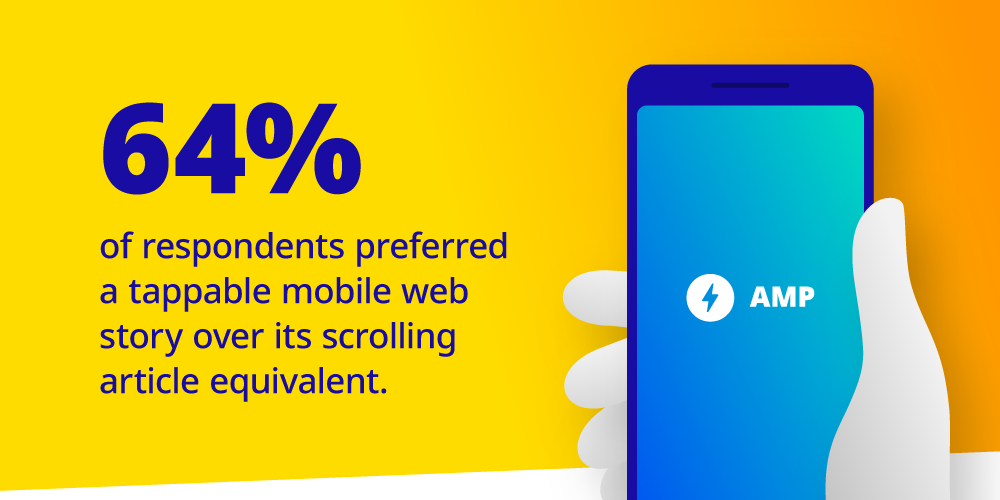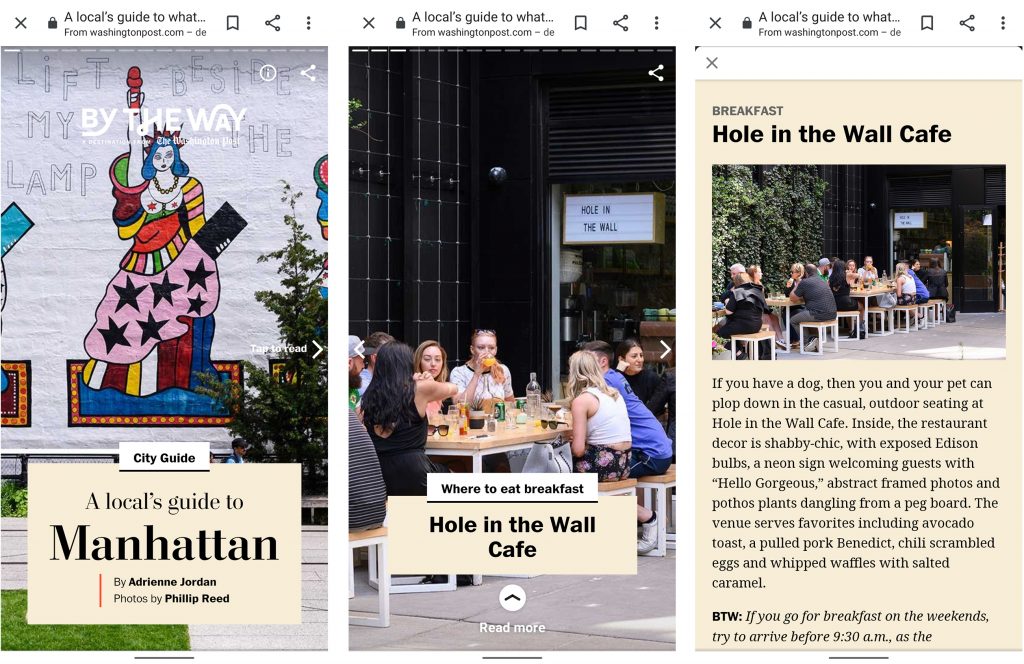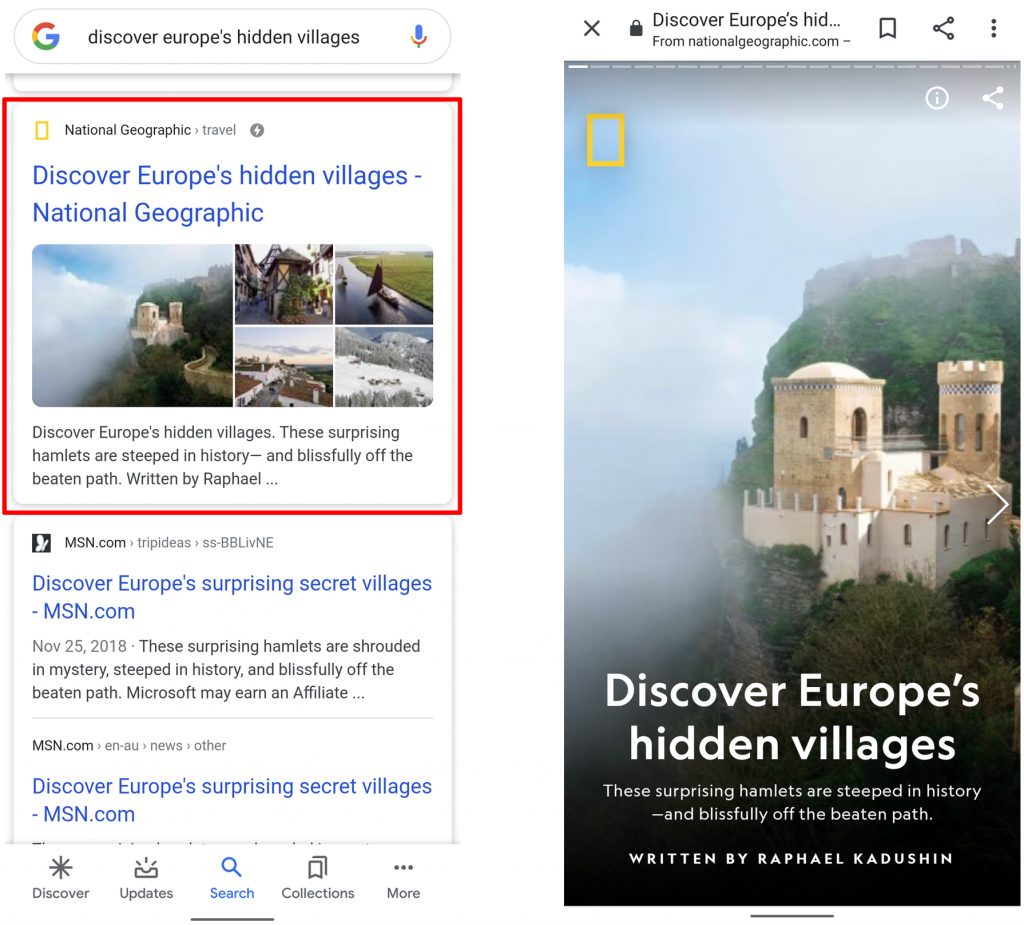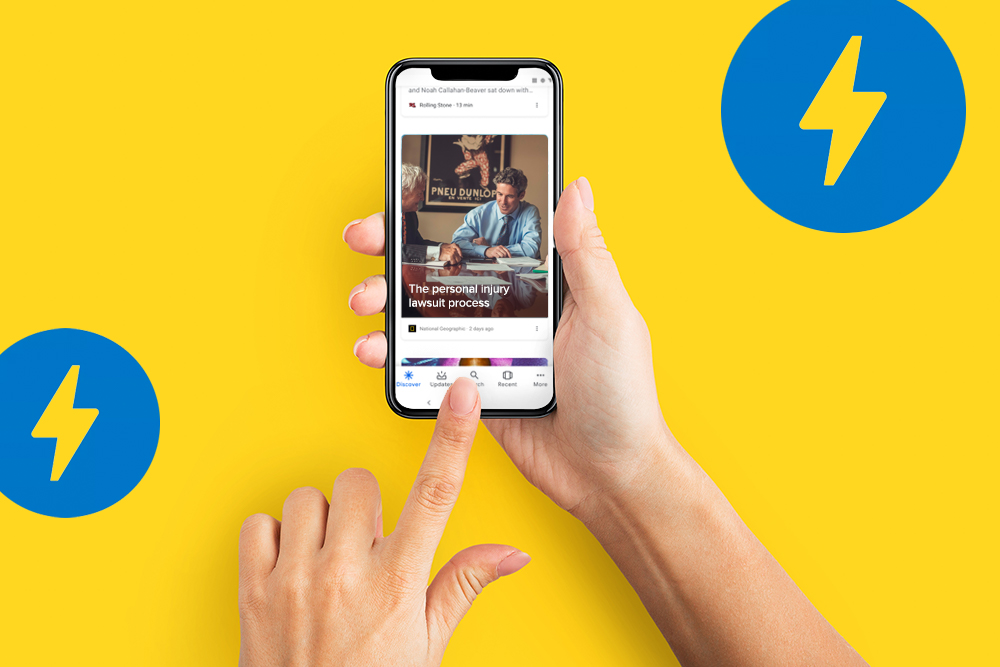Google Web Stories is a framework for building immersive, user-and mobile-friendly pages. A Web Story functions similarly to an Instagram story, in which a user swipes through a series of slides to learn about a topic.
Web Stories are part of the Accelerated Mobile Pages (AMP) framework and are aimed at mobile users. The idea is to make the mobile reading experience more like the experience of using an app. This gives content producers control over their branding and narrative while preserving the enhanced loading speed of AMP pages.
The AMP Project
Google launched its AMP project in February of 2016. AMP was and still is an open source HTML framework, although it is largely organized and controlled by Google.
AMP, at its base, is a way to make web pages load quickly. The project is part of Google’s push toward a mobile-first web — one that creates beautiful, user-focused web experiences for users on mobile devices. And for Google, user-focused means fast.
You have been seeing AMP pages at the top of your search results for years. These pages generally appear at the top of the listings, often in a carousel and accompanied by an image. You can tell whether a page is AMP compatible if you see a lightning bolt over the image or next to the listing URL.
![]()
Implementing AMP on your web pages can bring page load times down to under a second. To be AMP compatible, web pages must use an approved and stripped-down version of HTML code. AMP achieves load times that seem instantaneous by managing JavaScript execution, controlling image sizing externally, minimizing extension interference, and placing limitations on things like CSS, animations and font optimization. It also employs caching (AMP Cache) to improve performance.
AMP was criticized initially for its ultra-minimalization of features, which took most design control away from website owners, and for the perceived unfairness of AMP preference in search. While exact numbers vary based on data source, only approximately one to three percent of websites currently use AMP. However, pages from these sites appear disproportionally at the top of search results.
And as we wrote in our 2018 critique of AMP, Google also used to host AMP pages on its own servers.
Google Web Stories
Google has addressed most of these critiques and relinquished some control. It has also turned the AMP project into a multi-faceted framework that can be used to build websites, ads, stories and email.
Google refers to Web Stories as a “mobile-focused format for delivering news and information as visually rich, tap-through stories.” The idea behind Web Stories follows naturally from the AMP’s original objective of delivering lightning fast results to mobile users. Now, those speedy pages can be even prettier.
Advantages of Web Stories
While the original AMP project stripped pages down to mostly words, Web Stories does the opposite, providing users with an immersive, photo-rich and interactive tap-through experience. This allows your firm to tell a story in a way that engages users.
Research indicates that while most web pages are still heavily word-based, the majority of users prefer to consume content that is presented as a story. A September 2019 study titled, “Publishers: Capture The Mobile Web Opportunity With Tappable Content” indicates that 64 percent of users prefer a tappable mobile story format over its scrolling article equivalent.

Source: A commissioned study conducted by Forrester Consulting on behalf of Google, June 2019
1. You can tell your story.
Web Stories are perfect for informative content like how-tos and can be used to reach a potentially wider audience due to the preference given to AMP-compatible pages in search results.
For example, your firm may want to describe the lawsuit process in a simplified manner to help address visitors’ fears and give them confidence in your firm. This could be done with text, for example a bulleted list, which while informative, is likely to be merely scanned by a reader.
You could also build an interactive slideshow that takes the user through the lawsuit process with illustrations. Heatmap data indicates the users are more likely to click through and read information when it is presented in an interactive way, and a slideshow fits the bill.
Unfortunately, the JavaScript needed to display your elegant, informative slideshow is not usually mobile-friendly. Code will need to be removed, and often the slideshow will need to be broken out into individual page elements, in order for users to experience it on their smartphones.
Web Stories solves this problem. Your firm can create a slideshow, complete with text and sleek images, and it will be served to visitors in a fast-loading, tap-through format. Your firm can create singularly-focused, visual content that answers questions in an interactive story. Frequently asked questions could be distilled to individual tappable answers, giving your content multiple ways to be found.
Take this guide to New York City. Each slide visually details a place, with the option to swipe up for more information. The Story is easy to navigate and has just enough copy to keep the reader interested.

2. Web Stories are fast.
According to Search Engine Journal, over half of all web pages are abandoned if they take more than three seconds to load. And every second a page takes to load corresponds with a decrease in conversions.

Source: Google/SOASTA Research
Google’s algorithm also gives some preference to AMP pages and Stories — AMP is a ranking factor. The SEO benefits, speed and control Web Stories can deliver makes them a potential traffic and conversion booster.
3. Web Stories showcase design.
You can add a variety of elements to a Web Story, including video, buttons and animations. And the way your firm presents itself to potential clients matters.
Since you can be creative within the Web Stories framework, your firm can truly highlight both its expertise and personality, while showing off your technical aptitude. This enhances your ability to attract and engage readers and to be seen as the intelligent problem solver you actually are.
4. Web Stories offer more ways to be seen.
Web stories can appear in a variety of places within Google’s results. They may be in the AMP carousel, which appears above the textual search result.

A Story may also appear in an image search or as a single search result. When a Story is shown within the search results listings, as opposed to within the carousel, it is given an image or collage and noted with the Stories icon. This makes the result itself stand out and draws users to click on it.

Web Stories can help with SEO while showcasing your firm’s strengths. When implemented thoughtfully, with an eye toward engagement and conversion, Web Stories can be worth the time investment.
Why didn’t we include any lawyer screen shots in this post? We couldn’t find any. Be the first to be found.

